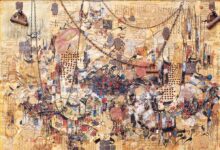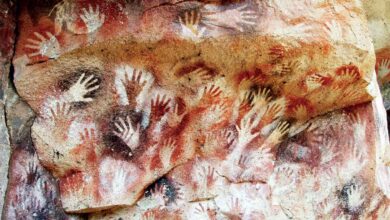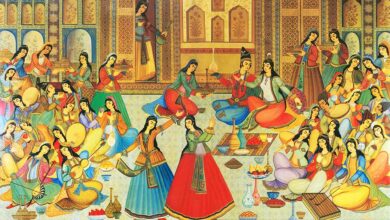The meaning of art in terms of different systems of thought and other worldviews

The meaning of art and its definition have been researched and studied in different ways and in terms of different systems of thought and worldviews, and there is a lot of material in this field. Philosophers, aestheticians, historians, archaeologists, anthropologists, and finally art critics, in turn, have looked at the issue from their own perspectives and tried to find a way.
But so far no one-size-fits-all definition has been provided. Contrary to popular belief, the issue is so wide and complex that the researcher remembers these two bits of Khayyam that:
Those who became the center of grace and manners became the companions of the perfect candle
They did not go through the dark night, they said it was a myth and they fell asleep
In addition to differences in methods, differences in beliefs and spirits, differences in worldviews and ideologies have also caused, and fueled differences. If art is not a scientific or experimental category that can be addressed or defined independently of mentalities and spirits and even individual and social goals and ideals. If in the pure sciences and the experimental sciences it is possible to separate – and I emphasize to some extent – the witness and the visible, in the case of art there can be no “spectator” and “actor” or “observer” and “landscape” in any way. Separated each other. In art, observer, perspective, and purpose are so intertwined that not only is it difficult to separate them, but the combination of these three elements of knowledge is so profound that it has given rise to completely different theories in the definition of art. While none of these theories can be considered complete and flawless. Some of these definitions are as follows:
– The ability to freely visualize thoughts
– Transmit feelings and emotions
– Escape from the monster (deformity of pure matter – Greek philosophers) or compensating for the vacuum and narrowness of the earth’s space
– An attempt to create beauty or create pleasing images
– The emotion from which a good face is obtained
– Expression and creation
– A hole beyond or an attempt to connect to the source of existence
– Doing something according to the rules or getting results through natural talents
– Perfect understanding of the world and…
It can be seen that these definitions sometimes have fundamental differences with each other. Some are enlightened and mystical, some are philosophical. And some realistic and positivist. Some are very general and some are specific. Some basically do not have the basic features of a scientific definition, which is comprehensiveness and constraint (there are many such definitions that are not mentioned in this brief).
At the same time, this scattering of differences of opinion does not lead us to think that the extensive research and studies that have been done so far to discover the nature and origin of art have been or will be useless. On the contrary, in the process of these historical researches and theoretical endeavors, new perspectives and unknowns have always been discovered, and problems have gradually passed and many things have been discovered that were not previously suspected.
On the other hand, it is not bad to pay attention to the fact that what is often considered as the definition of art is not basically the definition of art, but either the expression of the origin of art or the description of art or the rules and instructions and strategies. These four categories must be distinguished from each other and each must be examined, critiqued and analyzed separately. For example, theories and debates that are expressed under the heading “art for art’s sake” or “art for the people” (society), although not outside the realm of philosophy of art, are often grammatical.
(Normative) or strategic have no scientific value. These two theories are not as contradictory as they sometimes seem to be. Of course, they are different, but they have not necessarily been and are not contradictory under all historical conditions. When we pay attention to the intentions of the narrators and commentators of these theories, we see that the story is not that anyone who says that art for art necessarily has individualistic, antisocial or worse anti-moral intentions, or that everyone says art for society with subtleties and elements within personality , Does not pay attention to the inherent and emotional nature of art and does not know that art comes from the heart and does not fit into the dry range of social views with political goals. Conflicts and denials and proofs under this heading at low levels of expertise are often rhetorical, controversial, and verbal disputes arising from arbitrary interpretation and the verbal and lexical appearance of the two leaders. The formal approach to this story, which has a long evolutionary process (one hundred years or more) with ups and downs, ups and downs, right and wrong, different variations and tendencies, and different interpretations and perspectives within each of the two It is flowing, it has not gone anywhere, it will not win and it will not win. These two currents each have historical-social contexts and special causes that in turn can be justified and understood. Any judgment without understanding the causes, origins and socio-historical context of each is incorrect and superficial and leads to one-sided refinement and thinking.
Art is: receiving meaning and giving meaning to / deciphering and deciphering from / deciphering and deciphering / objects and phenomena in an emotional way (intuitive and direct). In simpler terms, art is: “discovering meaning – with meanings – hidden and hidden in the essence of objects and phenomena and transferring them from heart to heart.”
Can art be basically divided into different branches? If so, what are the types of art?
There are different types of art. The general classification is pure arts and applied arts; Which is also expressed under other headings such as fine arts and art industries, absolute and relative arts, real and useful, first and second degree and.. By distinguishing architecture from this dual division, some have identified three types of art: first-degree, intermediate (architecture), and second-degree. What matters is not the titles of these categories. It is the subject. The subject of the general classification of art is that a category of art has the following characteristics:
1- They are unconditional in terms of practical use.
2- They do not need acceptance and legitimacy (sociability).
3- They do not need production facilities and investment in order to produce.
4- They are not subject to immediate social benefit and use. Although by their nature they undoubtedly have social functions. However, the process of creating them does not require or depend on social benefit and function.
5. Its creation is not conditional on profitability. Rather, such a condition is detrimental to creativity.
6- The freedom of the artist is not limited, but unlimited freedom is necessary and a natural requirement of creativity.
Painting, sculpture, music, poetry, literature – and in general all works of art that do not require something of the artist himself and his natural talent – often fall into this category.
Isn’t this rule an exception within itself?
To say that it is often and in principle means that these features have prevailed in the general process of the history of the origin and development of this group of arts. Exceptionally, in some cases or in some periods, there were works that did not have these features. But first, those effects are not permanent. Secondly, they have not changed the general face of art. Simply put, and in any case, throughout the history of mankind we have a series of valuable works of art that have had these characteristics, and rather their value has been primarily derived from these characteristics. These are the works that have determined the quality and general process of art history and have been effective on society and the history of human evolution.
Works of art in history belong to this framework or to the category of applied arts that have beauty combined with material function and cannot have these characteristics per se. Such as: handicrafts (carpets, pottery, etc.) are decorative and cosmetic arts, carpentry, sculpture, architecture, graphics, or part of the first category of arts that are presented for the purpose of large-scale production or under non-free conditions. Such as: the role of fabric, design of industrial goods and products and…
It is not bad to emphasize here that in general all arts have scientific reflections and social role. However, according to the process of their formation and creation and the breadth and depth of their interaction with society, as well as their role in the social system of production, they are divided into two categories: “pure” and “applied”. Applied arts, or “productive arts”, are a group of arts that are mainly produced and marketed for the purpose of exchange. While pure arts are created independent of the system of production and merely to satisfy the inner intentions and intentions of the artist, being in the system of exchange or participating in the process of social production of goods is not the main purpose of their creation. However, pure arts are the mother of applied arts.
This has been the case, at least in modern times, and especially since the Industrial Revolution, when mass production replaced small, artistic production (Artisanal). In this way, pure arts direct and cultivate people’s tastes, through their mental promotion is an important element of influencing the system of sensory preferences in each period, and consequently applied arts to condition the tastes of people – market and art buyers – from one On the one hand, and the conditioning of the tastes of professionals and craftsmen and artists on the other, are affected.
* Sources and references are available in the editorial office of Artmag.











